Setting Up Your Home Emergency Kit
Have you ever wanted to be prepared, but aren't sure how? Here's some tips!
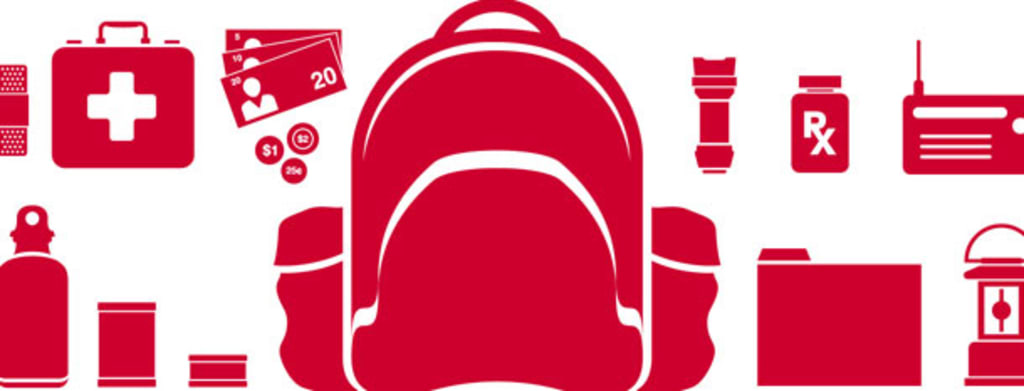
Are you an experienced over-packer? A certified precautionist? Me too. And there's no need to feel bad about it! Coming from the mind of a small scale prepper, you can NEVER be too prepared for the unknown, and when my country started experiencing a lot of earthquakes and flooding, I decided it was time to finally put together an emergency kit.
I've always said that I'd rather be prepared and never need it than be caught in an emergency situation with nothing. And that's how I convinced my partner, Mark, to humour me and put a kit together.
Our kit isn't finished, but as of now, everything is stored in a sealed plastic tub for easy access and transport in times of need. We need to add things like a gas cooker, and radios, but we store it with our camping gear so that everything we need is in one place and easy to grab if it is not already in the kit. We haven't had to use it yet (thankfully) but in the event we do, it being organized like this will reduce my stress levels greatly.
So, what's in the kit? I'm glad you asked. This is going to be a long one, so settle in...
Let's start with the absolute essentials...
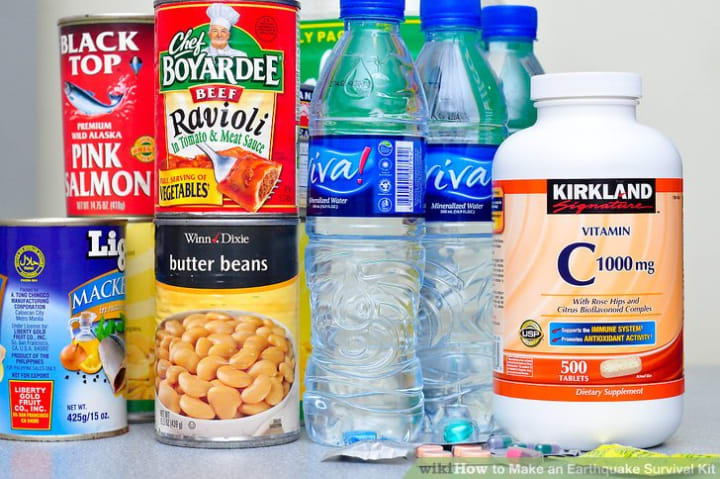
Let's start with the basic needs for life: Food, water, and warmth.
Keeping in mind that our kit is reasonably small (the odds that we will need it where we live is very small). We have put in a bit of everything that you need to survive, though not the amounts advised needed to survive for long periods of time. (Please make sure your kit has enough supplies for you and your family for at least a week!)
FOOD: In our kit, we have canned and wrapped food. Canned food like peaches and other fruit work well for us, but we've also included baked beans, spaghetti, and hearty soups to fill the warm-food portion that you'll need if you're caught out in the cold. Alongside that, we have packaged food like protein bars, muesli bars, and nuts. These things are just filling snacks that have some nutritional value and will keep for a considerable amount of time.
We also keep dry and wet food stored in cans and airtight containers for our cat; remember, your animals are just as important as you are in emergency situations, so make sure they will also be fed, warm, and safe.
We check our best-before dates every few months and replace our food with newer ones before they expire, it's important to make sure your stored food is edible in case you ever need it!
WATER: We keep sealed 1Litre bottles of water in our kit, one each for Mark and I, and one to share with our cat. This, of course, is less than the recommended amount to keep in your kit, but we keep a large 10Litre jug of water in our house at all times, but it can't fit in the bin we use for our kit. We check and refresh our water often, and keep dissolvable tablets that add flavour and vitamins so that if you struggle to drink water like me, it makes getting it down easier.
WARMTH: Warmth is one of the most important things to think about when making your kit. You might get caught out in the middle of winter, stuck somewhere with no shelter, or wet if it's flooding. That's why we've put a spare change of clothes including underwear, warm socks, pants, shirts, jackets, gloves, and warm hats aside for our kit. We also chose two large, woollen blankets, a smaller fleece blanket, and warm sleeping bags. It's always better to be too warm than too cold! It's also good to keep a spare pair of shoes in your kit, as cold or wet feet are the last thing you want. We keep hiking boots with ours as they are warm, waterproof, and stable enough for almost all conditions.
Next Step!
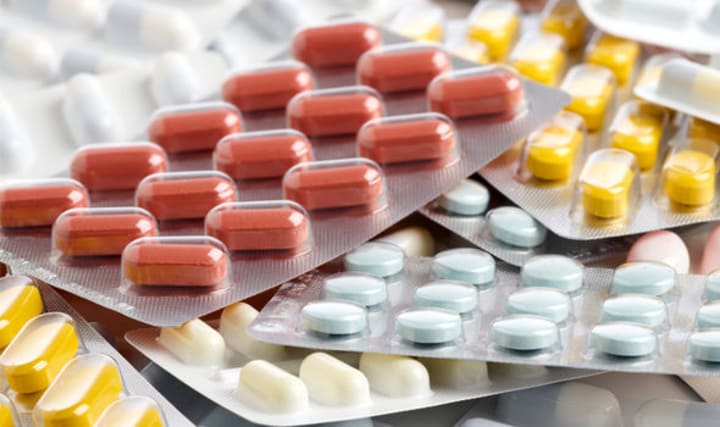
Next on the list are things that we value highly: Medicines.
This gets its own segment because our list of medicines is quite extensive, you'll soon see that this is the part of our kit we take the most seriously.
PAIN RELIEF: Of course this was the first thing to make its way into our med kit, we have a range of painkillers like Panadol, Ibuprofen, Nurofen, and Aspirin all waiting to go. Is this overkill? Some might say yes, but Mark and I both take different painkillers for different reasons, and being in pain in an emergency situation is one of the last things you need to deal with.
PERSONAL MEDICATIONS: Now by this, I mean things like medications for any conditions you have and need to keep under control. I personally have a heart condition that needs medication, so of course, I have enough of that packed away to keep me going for at least a week, as well as adequate experience in looking after myself without being medicated, if it came to that. As well as that we have hayfever medication as both of us suffer from extreme allergies to pollen, which can flare up in the rain.
OTHER NEEDS: This includes things like plasters, bandages, tape, sterile wipes, pins, basically the inside of a good medical kit, which you can buy online and in person at many places, and you should always have one stored in your kit, and in your home. We chose to add extras like strapping tape and Deep Heat as Mark has a bad shoulder that often needs strapping to keep it in place. You could also include saline, vitamins, Iron tablets, and limb supports, basically whatever other needs tickle your fancy or you think you might need.
Time for Tools:
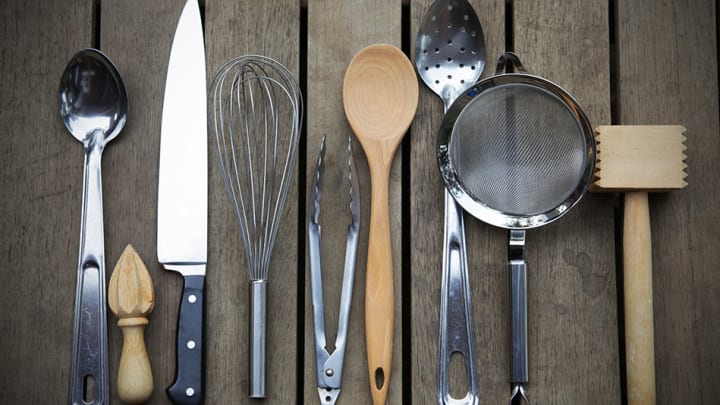
You read that right, time for the tools. It's all well and good having all of the things above, but they're useless to you if you don't have the tools you need to utilize them. So here's a brief list:
COOKING: It's important to have at least one pot and pan in your kit, because what's the point of having warm food if you have no way to warm it? Also important is a can opener, cutlery, sharp knives, a cooker (and the fuel to keep it lit), a lighter, AND matches and a cup and plate/bowl for each person your packing for. We also have a dual bowl packed for our cat so that he can eat and drink comfortably too.
MEDICAL: This includes things like scissors, pins, and needles that you may need to treat yourself until help arrives.
OTHER: We have a few other things packed away that may come in handy in your "end of the world" situation. We've packed things like napkins, pens, torches, spare batteries, money, a pocket knife, and candles. You never know what could happen in an emergency, and bringing one type of light source or one sharp knife may not be enough, so it's always best to have a backup.
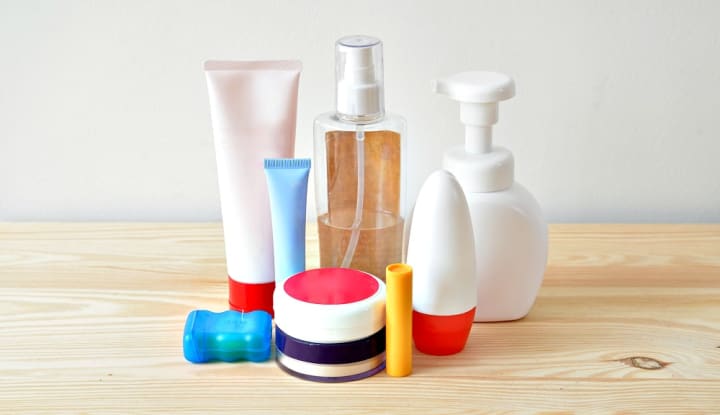
What else could you possibly need? Toiletries. Some of the things we packed are more like luxuries than needs, but we packed travel sized versions of these items to save space.
Items like soap, shampoo, conditioner, toothbrushes, toothpaste, and wet wipes help keep you clean and safe from germs, while also giving you the fresh feeling you might need after a few days without access to washing amenities.
FEMININE HYGIENE: People forget about this. This includes liners, pads, tampons, pain relief, and any birth control you may need during that time of the month. They are on the list because really, the last thing you need in a disaster is to be stuck in an awkward situation with no way to help yourself. That, and falling pregnant during a natural disaster is REALLY not ideal.

That's pretty much everything! That's the entire inside of our small kit, though no doubt there will be things missing, or things that we add to it over time. Remember to keep yourself stocked up and safe, especially in rough weather when you might be snowed in, flooded out, or just in a bit of a fix. Keep yourself and your family safe with these fantastic little kits and with a little bit of time, research, and effort you can be prepared for almost anything that may (or may not) happen!
*Please do not interpret this as a factual or accurate to guidelines guide. This is just my description of our personal kit and a guide to give you tips on what you might need, or what you may have forgotten making your own kit.*
About the Creator
Mikayla Walker
21 year old, small town New Zealand girl.


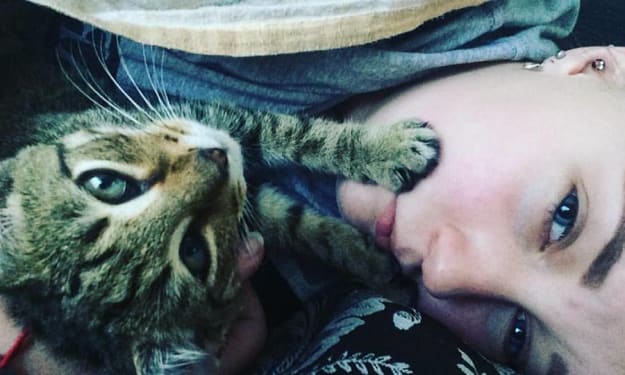

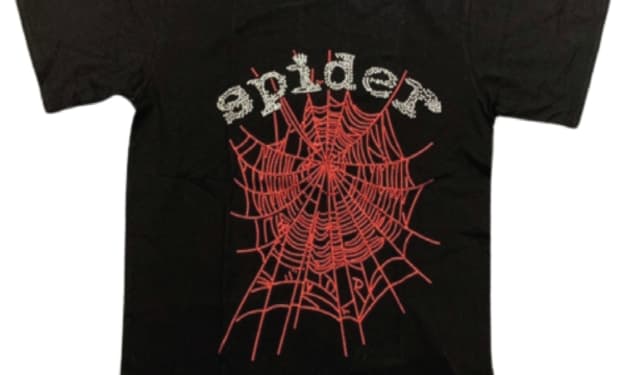

Comments
There are no comments for this story
Be the first to respond and start the conversation.